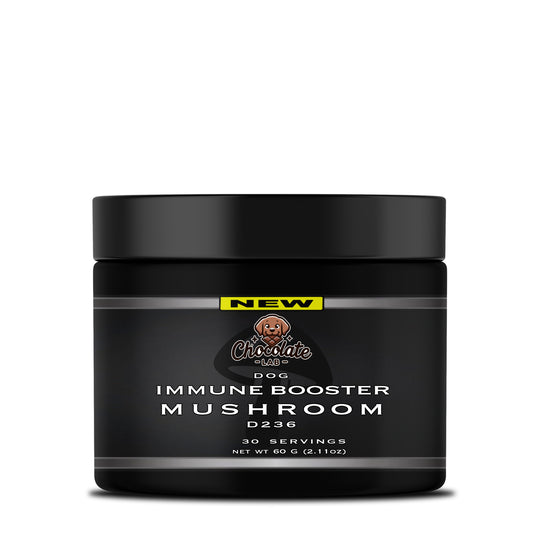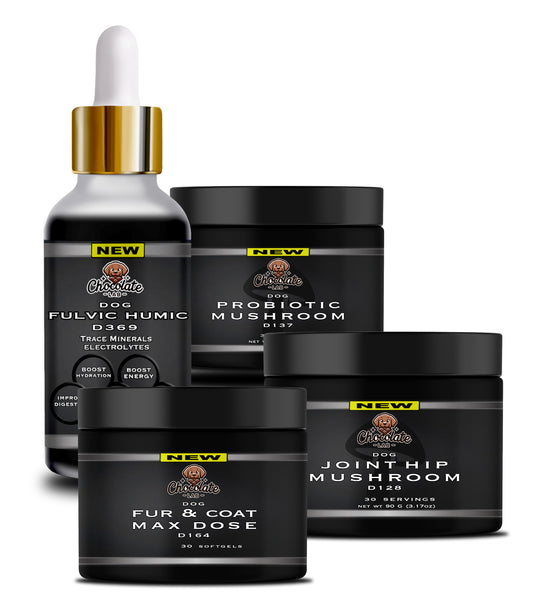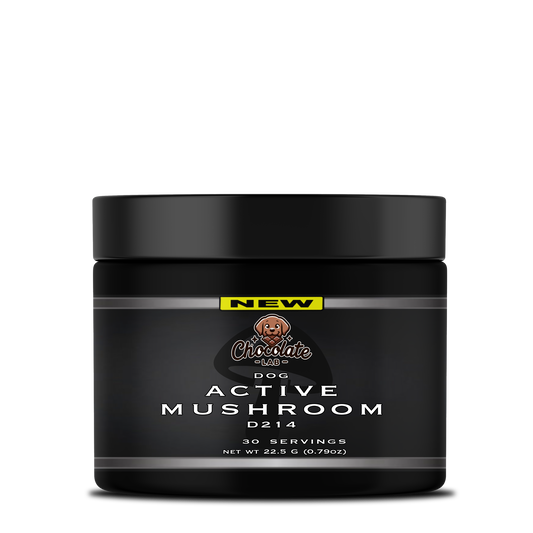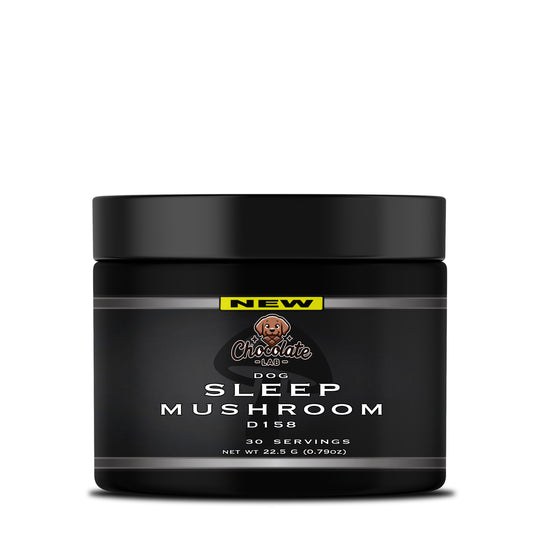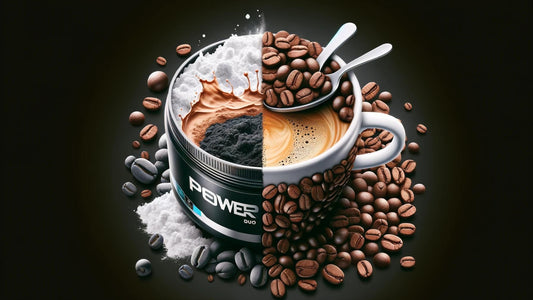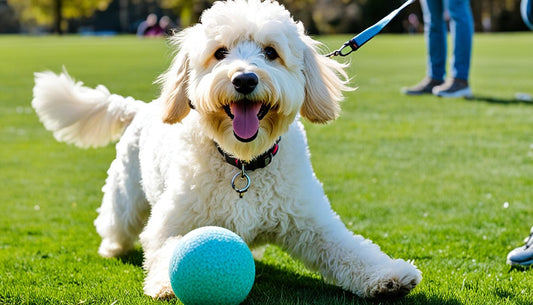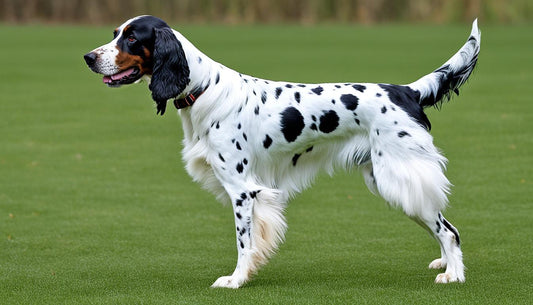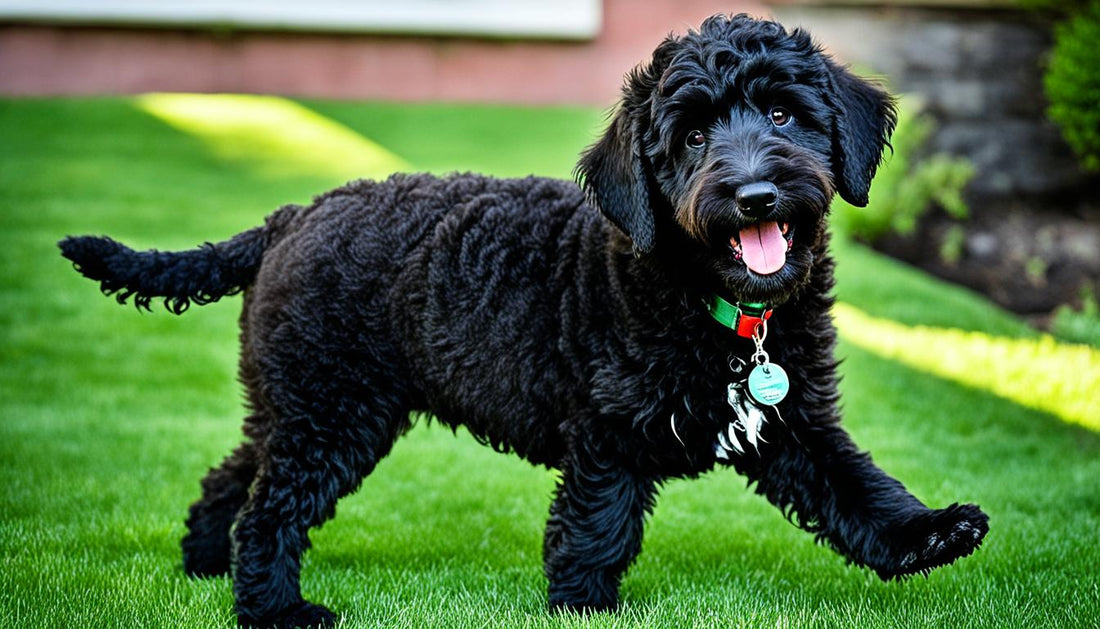
Black Labradoodle: Dog Breed Care, Traits & Tips
When considering a furry addition to your family, have you contemplated the unique blend of charm and practicality that a black Labradoodle offers? Famous for their intelligence, versatility, and hypoallergenic coats, these adaptable pets have taken the world by storm. But what does it really take to care for these cuddly companions? In this article, we weave through the myriad facets of owning a black Labradoodle puppy, including essential insights on Labradoodle grooming, understanding the Labradoodle size spectrum, and uncovering the distinctive traits that set this breed apart. Whether you're a seasoned dog owner or contemplating your first puppy, this guide is tailored to help you connect with your black Labradoodle on a deeper level.
Key Takeaways
- Discover what makes the black Labradoodle an ideal family pet.
- Learn essential grooming techniques specific to the Labradoodle's unique coat.
- Understand the importance of size considerations in relation to a Labradoodle's lifestyle needs.
- Gain insights on the black Labradoodle's temperament and how it affects family dynamics and interactions with other pets.
- Get practical tips to ensure your black Labradoodle stays healthy, happy, and well-integrated into your home.
Introduction to the Black Labradoodle Breed
Embarking on the journey to choose the perfect four-legged friend often leads numerous pet enthusiasts towards labradoodle puppies, a crossbreed adored for its intelligence and affable nature. Among the variety, the black Labradoodle has garnered a special place in the hearts of dog lovers. Both striking in appearance and equipped with a hypoallergenic coat, this particular variant of the Labradoodle breed is an attractive option for individuals and families alike, notably for those with allergies.
Renowned for their adaptable personality, black Labradoodle puppies are well-suited to a diverse array of living environments, from spacious suburban homes to compact city apartments. As these puppies grow, they retain their charm and adaptability, which makes a black labradoodle full grown an excellent lifelong companion. Furthermore, the breed's versatility is highlighted by the availability of different sizes, such as the mini black labradoodle, which caters to those desiring the same delightful temperament in a smaller package.
Black Labradoodles are not just known for their distinctive color, but also for their varying coat types, which can range from wavy to curly, each requiring specific grooming attention. While these dogs may not shed as much due to their Poodle ancestry, regular grooming is essential to maintain their coat's luster and to keep them looking their best.
For prospective black Labradoodle owners, understanding the dimensions this breed can grow into is important. From the petite miniatures to their larger counterparts, there's a black Labradoodle to suit the exercise space and the dynamics of any household. For instance, a full-sized black Labradoodle can become quite robust and energetic, requiring a more active lifestyle and room to bound and play.
In essence, whether you are drawn in by the irresistible cuteness of labradoodle puppies or seeking the vibrant energy of a black labradoodle full grown, this breed with its grand diversity is prepared to match your rhythm of life, offering undying loyalty, love, and companionship.
Historical Background of Labradoodles

The conception of the Labradoodle was a result of the intentional cross between two of the most beloved dog breeds; the Labrador Retriever and the Poodle. The idea was to blend the gentle nature of the Labrador with the hypoallergenic qualities of the Poodle. Though not originally aimed at creating a new breed, this mix garnered rapid popularity due to its desirable attributes, leading to a surge of labradoodle breeders aiming to perfect and establish the Labradoodle as a breed in its own right.
The first known instance of this crossbreeding took place in Australia during the 1980s. It was driven by the need to produce an assistance dog suited for people with allergies. This was the birth of the Labradoodle as we know it today—an intelligent, friendly, and low-shedding companion. As the breed's fame spread, it wasn't long before labradoodle black variants, with their lush, velvety coats, entered the scene, thrilling enthusiasts worldwide.
The evolution of the breed saw the introduction of the black f1 Labradoodle, a first-generation cross that carries the rich traits of both parents equally. The "f1" stands for the first filial generation, and these dogs often sport the signature fur that's become a quintessential symbol of the breed. With each subsequent generation, breeders have refined the Labradoodle's features, temperaments, and coat types, including an array of colors with the sumptuous black coat garnering a dedicated following.
The labors of dedicated labradoodle breeders have since expanded the breed's visibility and appeal. Initially serving a functional purpose, the Labradoodle has now secured its place as a sought-after family pet, balancing both utility and aesthetic appeal.
| Generation | Parent Breeds | Coat Characteristics | Common Uses |
|---|---|---|---|
| F1 Labradoodle | Labrador Retriever & Poodle | Variable, may be wavy or fleecy | Assistance, Allergy-friendly Pets |
| F1B Labradoodle | F1 Labradoodle & Poodle | More consistently curly, hypoallergenic | Companion Pets, Therapy Dogs |
| F2 Labradoodle | Two F1 Labradoodles | Varying coats, less predictable | Family Pets, Active Lifestyle Companions |
Heralded for their versatile genetics and the variety they bring, Labradoodles have captivated hearts far and wide. From their inception to the glossy sheen of the coveted labradoodle black coat seen today, these hybrids have made an indelible mark on the world of dog breeding.
Distinct Physical Characteristics of Black Labradoodles

When picturing the ideal family dog, the black Labradoodle often springs to mind with its distinguished physical traits and serene demeanor that's perfect for companionship. Boasting a coat that ranges from the deepest onyx to a soft charcoal, the versatile black Labradoodle makes a delightful addition to any home. Let's dive into the unique characteristics that define their physical appearance.
The Unique Black Coat
The initially eye-catching feature of the black Labradoodle is undoubtedly its glossy labradoodle black coat. Unlike other breeds, their fur can exhibit a variety of textures. Owners of a black Labradoodle with straight hair enjoy the sleekness that comes with the territory, often accompanied by a shimmer that reflects the sun's rays. In contrast, others may boast a gloriously curly or wavy fur, each strand curling with vitality and life. Caring for these coats involves a dedicated grooming routine to ensure their fur remains untangled and sleek—retaining that rich black sheen that's become so admired.
Size Variations Among Black Labradoodles
When selecting your furry companion, one should be mindful of the space they can afford the dog, both in their home and their hearts. Black Labradoodles come in a gradient of sizes, from the dainty black miniature labradoodle to the hearty, full grown black labradoodle. The black mini Labradoodle is ideal for those living in smaller spaces or for families wishing for a pet that's easier to manage physically. Larger spaces and active lifestyles, on the other hand, may be best suited to the full-sized counterpart known for their boundless energy and robust physique.
- Black Miniature Labradoodle: An excellent choice for apartment living, often weighing between 15-25 pounds.
- Black Mini Labradoodle: Slightly larger than their miniature cousins, they are often agile and playful.
- Full-Grown Black Labradoodle: Ranges from 50 to 65 pounds and perfect for active families or homes with yards.
In conclusion, the black Labradoodle is a breed that can provide the perfect canine companion regardless of the living situation or size preference. Their diversity in terms of physical traits, particularly their black coat and size potential, are factors to consider when choosing this charming and adaptable pet.
Understanding the Black Labradoodle Temperament

Known for a temperament that combines the best qualities of the Labrador Retriever and the Poodle, the black Labradoodle emerges as an exceptional pet for families and individuals alike. Affable and intelligent, these dogs exhibit a calm demeanor that makes them ideal for a variety of household dynamics. Their friendly nature is matched by an eagerness to please, resulting in a highly trainable companion adept in assimilating seamlessly into the family fabric.
Family Compatibility and Behavior
Embracing the world with a gentle disposition, the labradoodle temperament is often characterized by its remarkable compatibility with family life, including families with young children. Black Labradoodles typically bring a sense of joy and playfulness to a home, often demonstrating patience and an innate understanding of the nurturing required around the little ones. Engaging in play, they tend to form deep bonds with all family members, making them not just pets, but an integral part of the family circle.
With a disposition that leans toward the amiable and sociable, these dogs are as open to quiet affectionate moments as they are to spirited play sessions. The adaptable nature of a black labradoodle full grown ensures that they're as comfortable in the bustling atmosphere of a family celebration as they are in the quiet everyday routine of home life.
Interaction with Other Pets
For households teeming with a variety of animal companions, the labradoodle black proves itself to be a delightful addition. Labradoodles are sociable creatures by nature, often mingling harmoniously with other pets. Their non-aggressive and playful nature paves the way for forming amicable relationships, whether they're interacting with other dogs, cats, or even smaller pets.
To facilitate a smooth introduction and foster a positive environment, it is advised to socialize your black Labradoodle from a young age, allowing them to become accustomed to the presence and behaviors of other animals. Over time, this promotes a shared space where pets can co-exist in comfortable companionship, providing an enriching life for both the pets and their owners.
In summation, whether you're seeking black Labradoodle puppies for sale to bring youthful energy into your home, or you're welcoming a mature black labradoodle full grown into your life, the temperament of this breed assures a loving and harmonious addition to any family unit. As they grow and integrate into the family lifestyle, their kind-hearted and spirited nature continues to provide constant companionship and joy to those around them.
Health Considerations for Black Labradoodles

As you revel in the joy of owning a black miniature labradoodle or a larger companion, it's paramount to stay vigilant about their health. Robust and generally healthy, Labradoodles may nonetheless inherit genetic health issues typical of their Poodle and Labrador Retriever lineage.
One core element in the well-being of your canine friend is black labradoodle grooming. A regular grooming routine isn't just about aesthetics; it also offers the chance to spot early signs of skin issues, infections, or growths that could indicate underlying health concerns. Timely detection and treatment can mean a world of difference in outcomes and quality of life.
Along with a meticulous grooming schedule, regular veterinary check-ups are indispensable. Your vet can provide essential vaccinations, dental care, and conduct routine tests that can uncover health issues before they become severe.
- Monitor for signs of hip dysplasia, a common ailment in Labradors that can be inherited by Labradoodles.
- Eyes should be clear and bright; cloudiness or persistent irritation warrants a vet visit to rule out diseases like Progressive Retinal Atrophy.
- Be aware of ear infections – regular ear cleaning during grooming sessions can help prevent this frequent issue.
- Regular exercise and a balanced diet contribute to preventing obesity, which can strain your dog's joint and overall health.
The key is to embrace preventive healthcare strategies.Black miniature labradoodle owners, in particular, should be aware of the increased propensity of smaller breeds to dental problems due to teeth crowding, and should establish a dental care routine early on.
Equipped with the right knowledge and a proactive approach to health, you can look forward to many happy years with your loving and loyal black Labradoodle.
Important Grooming Tips for Black Labradoodle Coats

As the proud owner of a stunning black Labradoodle, your pet's coat requires special attention to maintain its lustrous shine and healthy appearance. Whether your companion sports a black Labradoodle straight hair or a more curly texture, the right grooming regimen will enhance their natural beauty and overall well-being. Below, find invaluable grooming tips that cater specifically to the distinctive needs of the labradoodle black coat.
Grooming Tools and Supplies
To ensure a well-groomed look for your black Labradoodle, it's essential to stock up on the right tools. Depending on whether you have a black miniature labradoodle or a larger variant, the choice of brushes will vary. For those with straight hair, a slicker brush or a metal comb can help prevent mats and tangles. Meanwhile, owners of curly-coated Labradoodles will benefit from bristle brushes that penetrate thick curls without causing discomfort.
Aiming for the perfect grooming set-up, here are recommended tools and supplies vital for maintaining a lush labradoodle coat:
- Fine-toothed Comb: Useful for detangling and removing small knots.
- Slicker Brush: Ideal for managing the unique curls of black Labradoodle coats.
- Bristle Brush: Perfect for redistributing oils and bringing out the shine in black labradoodle straight hair.
- Professional-grade Shampoo: Selecting a high-quality shampoo designed for dark coats can really make your Labradoodle’s coat pop.
- Conditioner: Keeps longer hair soft and more manageable.
- Ear Cleaning Solution: An essential part of labradoodle grooming to prevent infections.
- Nail Clippers: Regular trims will keep your Labradoodle comfortable and mobile.
Bathing and Brushing Routines
The frequency and method of bathing and brushing your Labradoodle are key to sustaining a glossy and dapper coat. Ideally, black Labradoodles should be given a bath every 4-6 weeks—too frequent bathing can strip essential oils from their fur, while infrequent baths may lead to build-up and matting, especially in dogs with denser curls. When administering baths, it's important to use lukewarm water and work the shampoo gently into their coat, paying special attention to avoid any soap in their eyes or ears.
After a relaxing bath, brushing should be a regular part of your dog’s grooming schedule. Below are tailored brushing routines for various coat types:
- For straight-haired coats: Brush two to three times a week with a slicker brush followed by a fine-toothed comb for detailed grooming.
- For curly or wavy coats: Daily brushing will be necessary to prevent mats and tangles; begin with a slicker brush and finish with a bristle brush for that enviable sheen.
- For black miniature labradoodles: Their smaller stature may require a gentler touch and smaller tools tailored to their delicate frame.
By implementing these grooming practices with the right tools, your black Labradoodle's signature coat will remain sumptuous, shiny, and healthy, drawing admiring glances wherever you and your furry friend go.
Optimal Diet and Nutrition for Labradoodles

Nutrition plays a pivotal role in the health and well-being of every breed, and when it comes to the energetic Labradoodle, tailoring their diet can help support their zestful lifestyle. Considering the black labradoodle size and their active nature, a balanced diet is crucial to sustain their energy levels and overall health. Owners must also pay attention to labradoodle training, as a well-nourished dog is more apt to learn and thrive in training scenarios.
It's essential to take into account the age, weight, and activity level of your Labradoodle when plotting out their meal plan. Puppies, adult dogs, and seniors require specific nutrient balances to support their unique stages in life. For example, puppies benefit from diets high in protein and fat to foster growth, whereas adults might need a diet tailored to maintain optimal body weight and support day-to-day activities. Seniors, on the other hand, often require fewer calories but still need a nutrient-rich diet to support their aging bodies.
Labradoodles, known for their intelligence and eagerness, also often have dietary sensitivities that owners should be aware of. These can include sensitivities to grains or certain proteins, and symptoms may manifest as skin irritations, gastrointestinal upsets, or other allergic reactions. It's imperative to consult with a veterinarian to establish an appropriate diet, especially if such sensitivities arise.
| Age Group | Protein | Fat | Carbohydrates | Essential Nutrients | Caloric Intake |
|---|---|---|---|---|---|
| Puppies (up to 1 year) | High | Moderate to High | Balanced | Calcium, Phosphorus, DHA | High |
| Adults (1-7 years) | Moderate | Moderate | Moderate | Omega fatty acids, Vitamins, Minerals | Moderate to Adjusted as per activity |
| Seniors (7+ years) | Moderate to Low | Low | High Fiber | Glucosamine, Antioxidants | Lower |
When feeding your Labradoodle, it's crucial to choose high-quality dog food that meets Association of American Feed Control Officials (AAFCO) guidelines. Real meats, vegetables, and wholesome grains (if not sensitive) should be at the forefront of the ingredient list. Be sure to avoid foods with fillers, artificial colors, or preservatives that offer little nutritional value and could be detrimental to your pet's health.
Remember that the right nutrition goes hand-in-hand with effective labradoodle training. A balanced diet not only provides the energy for everyday play but also supports cognitive function, making them receptive and alert during training sessions. As you consider the black labradoodle size—whether you have a miniature, medium, or standard Labradoodle—adapting their diet as they grow ensures that every meal contributes to their vitality and longevity.
By adhering to these dietary guidelines and consulting with a professional when necessary, you can ensure that your Labradoodle's nutrition is on point, paving the way for a healthy, active, and happy life beside you.
Training and Socialization Strategies

Embarking on the journey of bringing a new black labradoodle puppy into your life comes with the joy of fostering its growth through effective training and socialization. Proper labradoodle training from a young age sets the groundwork for a well-behaved adult dog, while socialization ensures your pet is comfortable and confident in various environments. By investing time and patience in these crucial developmental stages, your black Labradoodle's temperament will flourish, making them a beloved and well-integrated member of the family.
Puppy Training Basics
Crate training serves as an excellent starting point for your black labradoodle puppy. It provides a safe space for your pet and helps with housebreaking, as dogs are naturally inclined to keep their den clean. Introduce the crate positively, making it comfortable and rewarding your pup for staying in it calmly. Combine this with a consistent schedule for feeding and potty breaks to successfully housebreak your Labradoodle.
Obedience commands like 'sit,' 'stay,' 'come,' and 'heel' are fundamental parts of a Labradoodle's education. Consistent, short, and positive training sessions will reinforce good behavior and nurture a trusting relationship between you and your puppy. Not to mention, these commands can keep your dog safe in potentially dangerous situations.
Socializing Your Black Labradoodle
Socialization is just as essential as obedience training for a well-rounded labradoodle temperament. Introduce your black Labradoodle to different people, animals, environments, and sounds early on. This ensures they're less likely to react negatively to new experiences as they grow. Remember, the more positive encounters they have during their formative weeks, the more confident they'll become.
For those looking for black labradoodle puppies for sale, consider inquiring about the social experiences the breeder has provided. Puppies that have been exposed to various stimuli from a young age are generally more adaptable and sociable. Don't forget to continue this practice at home by gradually exposing your puppy to new situations in a controlled and comforting manner.
Ultimately, consistent training and comprehensive socialization not only build the foundation for good behavior but also reduce the likelihood of future anxiety and aggression. By adhering to these strategies, you're on your path to nurturing an intelligent, affectionate, and socially adept black Labradoodle companion.
Exercise Needs for A Healthy Black Labradoodle

The vitality and health of a full grown black labradoodle are significantly influenced by regular exercise. This energetic breed thrives on physical activity that suits its natural verve and helps to keep both their body and mind in tip-top condition. Exercise isn't just about maintaining a healthy weight or muscle tone; it's also crucial for mental stimulation and behavioral management. Let's outline the varying needs as the lively black Labradoodle puppy matures into an elegant black labradoodle full grown.
A balanced exercise routine for a Labradoodle should incorporate activities that challenge them both physically and mentally. These can include:
- Long daily walks that provide sensory stimulation from the outside world
- Fetch, Frisbee, or other retrieving games that cater to their retrieving instincts
- Agility training, which combines obedience skills with high-energy activity
- Swimming, an excellent low-impact exercise for dogs of all ages
- Hide and seek games that encourage problem-solving and recall skills
- Puzzle toys that provide mental stimulation on indoor days
As your black Labradoodle transitions from a buoyant puppy to a sturdy full grown black labradoodle, their exercise demands will also evolve. Initial exercise routines should be comparatively gentler to support their developing bones and joints. As they grow, you can gradually introduce longer and more demanding activities that match their increased stamina and strength.
It's also essential to tailor the type and intensity of exercise to the individual dog. Consider factors such as age, health status, and natural disposition. High-energy dogs might need more playtime and longer walks, while less active individuals may require shorter, more manageable bouts of activity.
Remember, consistency is key. Establishing a routine not only provides your black labradoodle full grown with the physical activity they crave but also strengthens the bond between you and your furry friend through quality time spent together.
In conclusion, incorporating the right mix of physical and mental exercises into your Labradoodle's routine will significantly contribute to their happiness and health—keeping the vibrant spirit of this beloved breed alive throughout the entirety of their life.
Finding Reputable Black Labradoodle Breeders

When embarking on the search for a loyal and loving black Labradoodle, it's crucial to find a breeder that upholds the highest standards for health, temperament, and lineage. Navigating through the vast number of labradoodle breeders requires diligence and an understanding of what distinguishes a reputable breeder from the rest.
Evaluating Breeder Credentials
Reputable labradoodle breeders are not only passionate about the breed but are also deeply committed to ensuring the health and well-being of their pups. Here are essential credentials to consider:
- Membership in breed-specific clubs that advocate for responsible breeding practices.
- Clear communication regarding the genetic history of the puppies, including the presence of any black f1 labradoodle lineage.
- Transparency and willingness to show living conditions of their dogs, proving a clean, loving, and nurturing environment.
- Health screening records and certifications for the puppies and their parents, spotlighting any hereditary conditions associated with the labradoodle black coat.
- Positive testimonials from previous buyers, emphasizing the breeder's reputation and the health and happiness of the dogs they've homed.
Preparing to Bring Your Puppy Home
Before adopting your black Labradoodle, it is vital to ensure your home is prepared for your new family member. Here's a checklist to get you started:
| Preparation | Description | Benefit |
|---|---|---|
| Puppy-proofing the home | Securing hazardous items and creating a safe space. | Prevents accidents and creates a stress-free environment for your puppy. |
| Purchasing supplies | Gathering essentials like a bed, food, water bowls, toys, leash, and collar. | Ensures comfort and starts positive training from day one. |
| Setting up a veterinarian appointment | Scheduling a health check within the first few days of adoption. | Establishes a healthcare plan and addresses any immediate medical needs. |
| Organizing a diet plan | Determining an appropriate and nutritious diet, suitable for a black labradoodle straight hair coat type for example. | Supports growth and maintains a luscious, healthy coat. |
Finding and committing to a responsible breeder, and preparing your home for the arrival of your black labradoodle, lays the groundwork for a fulfilling and joyful relationship with your furry friend.
Black Labradoodle Puppies for Sale: Things to Consider
If you’re considering bringing one of the adorable labradoodle puppies into your home, you’re likely already enchanted by their intelligent, friendly nature. However, when looking for black labradoodle puppies for sale, there are several critical factors that all prospective buyers need to consider. This includes understanding the long-term commitment of pet ownership, the costs involved, and the type of living environment you can provide. Let's discuss what you should look for and prepare for in this exciting journey.
Initial Costs and Budgeting: Beyond the initial purchase price of black Labradoodle puppies, which can vary depending on the breeder’s reputation and the puppy’s lineage, there are additional costs to consider. These include essential vaccinations, spaying or neutering, microchipping, and other health checks that are crucial in the early stages of a puppy's life.
Ongoing Expenses: A budget should be set aside for regular expenses such as high-quality food, grooming supplies, veterinary check-ups, and pet insurance. Investing in a pet insurance policy can often mitigate unexpected veterinary costs that may arise from accidents or illnesses.
Space and Environment: The environment you bring your Labradoodle into is as important as the love you give. Black Labradoodles are active dogs that need space to play and exercise. Before purchasing, ensure you have adequate room in your home and assess your lifestyle to see if it aligns with the needs of a growing puppy.
Time and Attention: Labradoodle puppies crave attention and require consistent training and socialization. Reflect on the time you can commit to your puppy's training, exercise, and companionship. A neglected Labradoodle can develop behavioral issues, so it’s important to ensure you can give your pet the time they deserve.
Long-Term Commitment: Owning a dog is a long-term commitment, often spanning 10-15 years. Consider your future plans, such as potential relocations, family changes, or lifestyle shifts, and how a Labradoodle would fit into these scenarios.
| Aspect | Details | Considerations |
|---|---|---|
| Initial Costs | Purchase price, vaccinations, initial vet visits | Budget for upfront costs; may include travel or shipping if not local |
| Ongoing Expenses | Food, grooming, vet check-ups, insurance | Regular budget allocation for pet care |
| Housing Needs | Space for exercise, safe environment | Ensure adequate indoor and outdoor space |
| Time Investment | Training, socialization, exercise, companionship | Consider work/life balance and availability |
| Longevity | Puppies require long-term commitment | Future life changes that could impact pet ownership |
By evaluating these factors closely, prospective owners can better prepare for the exciting yet significant responsibility of bringing a black Labradoodle into their lives. Through thoughtful consideration and planning, you're one step closer to finding the perfect furry companion to add to your family.
Adoption and Rescue Options for Black Labradoodles
Welcoming a black mini labradoodle or black miniature labradoodle into your home doesn't always require you to go through breeders. Adoption and rescue are viable avenues that not only provide a loving home to a pet but also contribute to animal welfare. Opting for adoption or rescue may save the lives of dogs who find themselves without a home, often through no fault of their own.
Many potential pet owners aren’t aware of the sheer number of labradoodles that end up in shelters or with rescue organizations every year. This includes all sizes, from the playful black mini labradoodle to the affectionate black miniature labradoodle, and even their larger counterparts. The reasons are diverse, but more often than not, these dogs are there through no fault of their own and are eagerly waiting for a second chance at a happy life.
The process of adopting a Labradoodle often involves contacting local shelters or specific breed rescues. Many organizations now list their adoptable dogs online, complete with profiles that include their history, temperament, and any special needs they may have. Here are some potential benefits of adopting a rescue Labradoodle:
- An opportunity to provide a forever home to a dog in need
- Rescue dogs often come with vaccinations, spay/neuter, and are microchipped
- Adoption fees are typically less than the cost of buying a puppy from a breeder
- Many rescue dogs are already house-trained and socialized
When looking for organizations from which to adopt, consider both the size of the dog – whether you’re looking for a black mini labradoodle or a slightly larger black miniature labradoodle – and the adaptability of the breed to your living situation. Prospective adopters should take time to visit animal shelters, engage with local Labradoodle groups on social media, or attend adoption events. Building a relationship with rescue staff can also help them match you with the perfect Labradoodle for your home and lifestyle.
Adopting an older Labradoodle also allows you to bypass some of the intensive training and care needs that come with a young puppy. Many older Labradoodles in shelters have a basic understanding of commands and training but still have plenty of love and active years left to share with their new families.
By choosing to adopt, you make a valuable difference in the life of a loving dog while also opening the space for another animal in need. Adoption simplifies the path to finding a loyal, affectionate, and already-trained companion who is just waiting for someone to share their love with.
Conclusion
Throughout our exploration of the charming black Labradoodle, we've navigated through the intricacies of their care, from the precise grooming needs of a mini black labradoodle to the exuberant energy of the big black labradoodle. We've delved deep into the breed's historical tapestry, unraveling the origins of their hypoallergenic coats and the genetic lottery that has given rise to the affectionate and intelligent black f1 labradoodle.
In your hands lies the responsibility, bursting with potential, to forge a lifelong bond. Whether you're drawn to the compactness of a mini black labradoodle or the robust playfulness of a big black labradoodle, remember that this choice is a pact of care, training, and companionship. Owners both seasoned and new can look forward to the rewards that diligent stewardship of these canines brings—a home enriched by their loyal and jovial spirits.
Your endearing black Labradoodle, irrespective of size, needs you to be their advocate, their nurturer, and their guide through the idyllic and demanding phases of their life. Immerse yourself in the journey with love, patience, and dedication, and you'll find that the bond you create is as deep and striking as the lustrous coat they proudly wear. For both the dainty mini black labradoodle and the full-spirited big black labradoodle alike, each day is a breath of shared life, an invitation to enduring friendship, and an affirmation that the path of partnership with these creatures is one of enduring joy.
FAQ
What is the temperament of a black Labradoodle?
Black Labradoodles are known for their friendly, gentle, and intelligent temperament. They make excellent family pets, as they are adaptable, playful, and affectionate. They typically get along well with children and other pets, making them great additions to multi-pet households.
Are Labradoodles easy to train?
Yes, Labradoodles are considered to be quite easy to train due to their intelligence and eagerness to please their owners. Early and consistent training, paired with positive reinforcement techniques, can yield great results in obedience and behavior for Labradoodles.
What grooming needs do black Labradoodles have?
Black Labradoodles require regular grooming to keep their coat in good condition. This includes regular brushing to prevent mats and tangles, especially if they have curly or wavy coats. Depending on the Labradoodle's coat type, they may also need periodic haircuts. Bathing should be done as needed, and nails, ears, and teeth should also be maintained as part of their regular grooming routine.
How much exercise do black Labradoodles need?
Labradoodles are active dogs that require daily exercise to maintain their health and happiness. A minimum of 30 minutes to an hour of physical activity, like walking, playing fetch, or running, is recommended. Exercise needs may vary based on their size, age, and individual energy level.
Are black Labradoodles hypoallergenic?
Labradoodles are often promoted as hypoallergenic due to the Poodle's influence on their coat. However, no dog breed is completely hypoallergenic. Black Labradoodles tend to shed less than many other breeds, making them a good option for those with mild allergies.
What size do black Labradoodles come in?
Black Labradoodles come in various sizes, including mini, medium, and standard. A mini black Labradoodle can weigh as little as 15-30 pounds, while a standard black Labradoodle can weigh anywhere from 50 to 65 pounds when fully grown.
What should I look for when choosing a black Labradoodle breeder?
When selecting a black Labradoodle breeder, look for one who is transparent about their breeding practices, prioritizes the health of the puppies and parent dogs, conducts genetic testing, and operates in a clean and humane environment. It’s important that the breeder takes an interest in where their puppies will be placed and offers support for new puppy owners.
Can black Labradoodles have straight hair?
Yes, black Labradoodles can have straight hair, although this is less common than curly or wavy coats. Straight-haired Labradoodles are sometimes referred to as having a "hair" coat as opposed to a "wool" or "fleece" coat, and their grooming requirements may differ slightly from their curly-coated counterparts.
Do Labradoodles make good pets for people with allergies?
Labradoodles can be suitable pets for some people with allergies due to their low-shedding coats. However, since individual allergies can vary, it's recommended to spend time with a Labradoodle before adopting to ensure that they are a good fit for your specific allergy concerns.
How long do black Labradoodles live?
Black Labradoodles have an average lifespan of around 12 to 15 years. Proper care, a nutritious diet, regular exercise, and routine veterinary check-ups can help contribute to a long and healthy life.
Are there different types of Labradoodle coats?
Yes, Labradoodles can have three different coat types: wool (similar to a Poodle's coat), fleece (soft and wavy), and hair (straighter and more similar to a Labrador Retriever's coat). The type of coat determines the grooming needs of the Labradoodle.
What is the difference between an F1 and F1b black Labradoodle?
An F1 black Labradoodle is the first-generation cross between a purebred Labrador Retriever and a purebred Poodle, typically resulting in a 50/50 genetic split from both parents. An F1b black Labradoodle is a cross between an F1 Labradoodle and a purebred Poodle, giving the F1b Labradoodle a higher percentage of Poodle genetics, often making it more hypoallergenic with a curlier coat.

